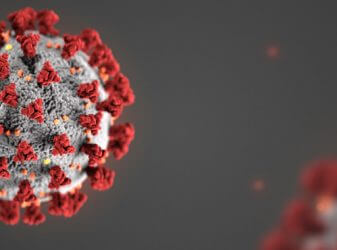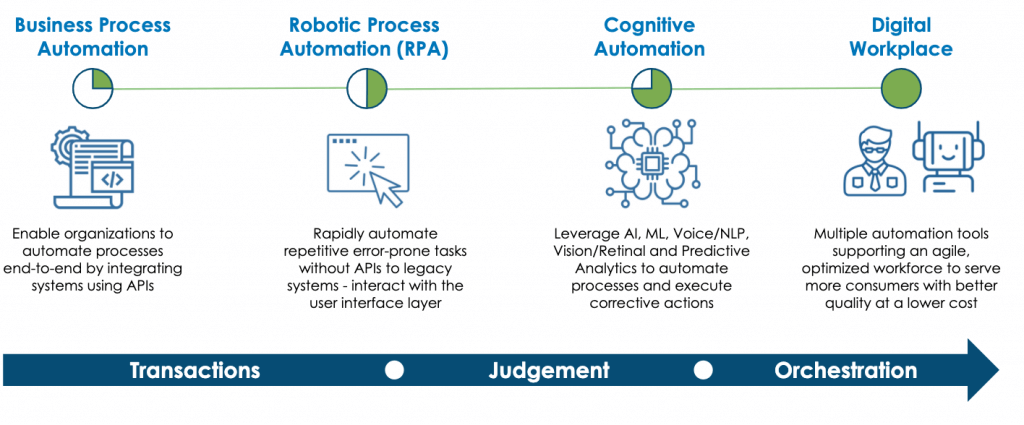
Digital Health in the Age of Coronavirus: How to Leverage Tech to Combat COVID-19
Oliver Lignell, Vice President, Virtual Health, AVIA
Insights
Hasim Turhan, Director, Operational Transformation, AVIA

RPA Solutions Implemented Quickly to Extend Workforce During COVID-19 Crisis
During the COVID-19 crisis, effective deployment and synchronization of scarce resources has become extremely important. One way to extend your health system’s overworked staff is through the enablement of a digital workforce via process automation solutions.
A select group of forward-leaning health systems from AVIA’s 25% Challenge Initiative met recently to share their successes quickly standing up robotic process automation (RPA) solutions. The group focused on RPA because of its low complexity and scalability.
RPA allowed these Members to quickly deploy new solutions that integrated disparate systems and augmented strenuous workflows, including text and website chatbots that immediately addressed patient registration, triage, and treatment needs related to COVID-19. The following highlights their early successes and provides insight into RPA’s critical value during and after the COVID-19 crisis.
RPA Is a Key Step in the Journey to Intelligent Automation
RPA offers health systems the ability to rapidly automate repetitive, error-prone tasks (patient registration or data aggregation from disparate systems) without APIs to legacy systems. Details on key use cases follow. (See the chart below for RPA’s role in the Intelligent Automation Continuum.)

Bot Registers Patients for Virtual Visits/EMR, Reducing Manual Labor
A large nonprofit health system in the Southeast needed an efficient and rapid way to manage its video visit registration process to handle the influx of patients seeking COVID-19 information and treatment advice through its patient portal.
The system sought to direct patients to use online and video visits as a first line of treatment, to improve patients’ access to care and safety as well as the safety of its staff. To do so, each patient had to be registered in MyChart as well as with their telehealth vendor.
Within 24 hours of understanding this need, the health system implemented a bot to cross-reference patients with its EMR, complete EMR registrations for new patients, and register patients with the telehealth vendor.
Within one week, the bot had processed 2,000 registrations, freeing call center staff to focus on other high-priority areas and eliminating tedious manual labor.
MVP Bot Set to Monitor Employees’ Health, Free Nurses to Work Top of Licence
A large Northeastern integrated health system needed an efficient way to offer remote monitoring to its large employee population. The employee health department’s case volume had significantly increased due to staff exposure to COVID-19.
The health system’s current approach was inefficient and did not optimize digital: 16 nurses were answering phone calls about possible exposure and capturing this information on 16 different spreadsheets. The nurses were spending significant time calling employees for temperature checks and to assess symptoms, as well as manually entering this data.
To streamline data collection and entry, the health system created an employee health survey bot. This bot will email and/or text a link to a 20-question survey to employees using a database that includes employees’ contact information. Once the survey is completed, the bot will then correlate this info with the database, automatically tracking employees’ completion of the survey. Goals are to reduce nurses’ time spent answering phone calls and tracking symptoms and to provide a more efficient and comprehensive way to monitor their employee population.
Leaders stressed that they considered this bot to be a “minimum viable bot” and that they would continue to iterate and improve on it after it went live.
Future Topics of Exploration: Workers’ Comp and Remote Patient Monitoring
Members of the RPA Fast-Track Group will continue to meet monthly to collaborate on approaches for the rapid creation and implementation of RPA solutions to address the COVID-19 crisis. They will then move forward with the needs associated with the rolling recovery and new normal. Next up, they plan to address employee off-boarding from COVID-19 monitoring, workers’ compensation claims filing, and remote patient monitoring via survey or text.
If you’re interested in learning more about the work that the RPA Fast-Track Group is doing or joining us for our next virtual session around COVID-19 response use cases and ROI measurement on April 30th, please reach out to digitalenterprise@avia.health. For more information on how digital solutions are helping healthcare providers to address COVID-19, check out our COVID-19 Resource Hub on AVIA Connect.
COVID-19 Digital Response and Readiness Pulse
How does your health system measure up?
Weekly COVID-19 Resources
Get insightful updates delivered right to your inbox.
Sign up for our COVID-19 Weekly Bulletin here.